The 1960s saw the rise of pop culture, great social movement, and self-expression. So, as people increasingly wore what they wanted, we’re hopping back into our time machine to see what men really wore in the swinging 1960s.
The Swinging 60s
To begin with an understatement, quite a bit happened in the 1960s. Man landed on the moon, the TV show The Flintstones premiered, Muhammad Ali won Olympic gold, the Batman TV series and Batmania swept the United States and the world, and, indeed, an even bigger craze, Beatlemania also took the world by storm.
Perhaps as a result of this, Americans, in particular, became obsessed with all things British – everything from James Bond to bands like The Rolling Stones and The Kinks, to The Avengers TV series and actors like Peter Sellers and Michael Caine.
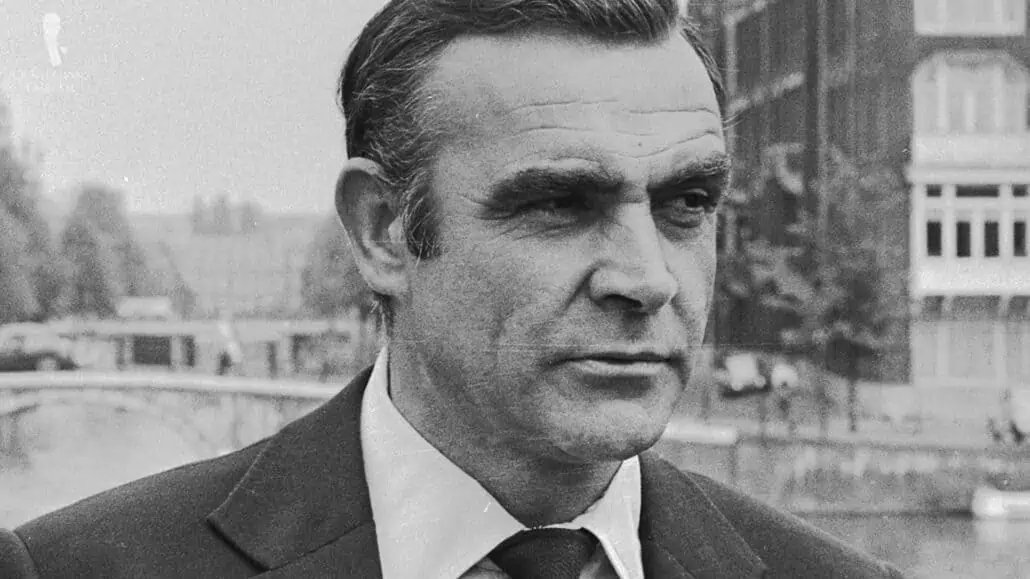
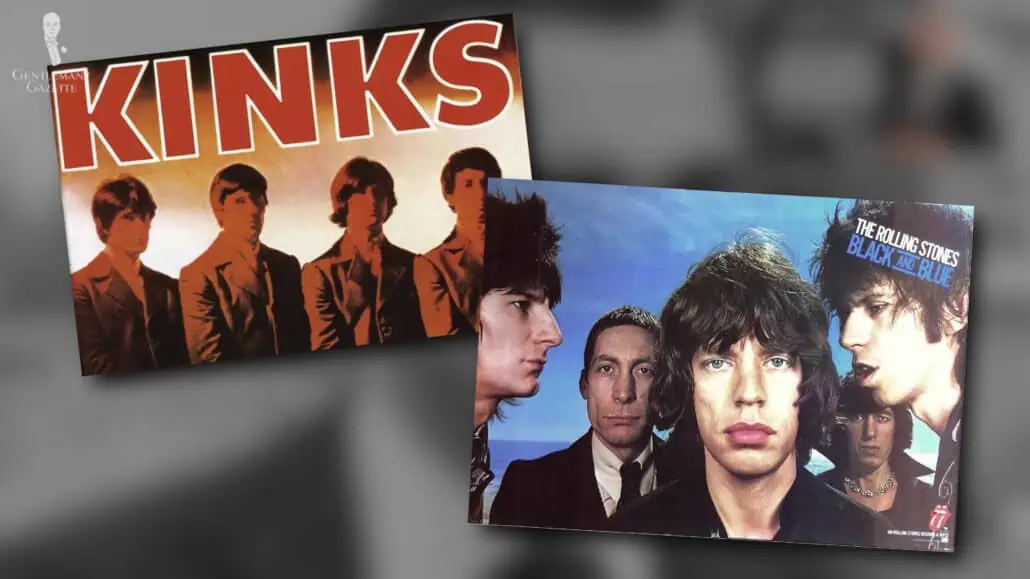
It was a decade of great social change with civil rights movements from African-Americans and Mexican-Americans. As well as other social change movements from feminists and the LGBTQ community.
The Vietnam War was still raging and this, of course, led to the anti-war movement, which saw large protests across the US. There were several high-profile assassinations, including those of John and Robert Kennedy, as well as Martin Luther King, Jr. and Malcolm X.
All of these events, then, would impact the decade of the 1960s and consumerism in various different ways.
On a lighter note though – and focusing specifically on clothing – the 60s were also home to several sartorial revolutions, perhaps the most important of these being the so-called Peacock Revolution. This new approach to fashion was characterized by bold colors, large patterns, and, frankly, a few bizarre choices.
Still, men were freely expressing their artistic nature and their individuality through these clothing choices. Conventions of dress were definitely being challenged, and artistic types like David Bowie were blurring the lines between what constituted men’s and women’s fashions.
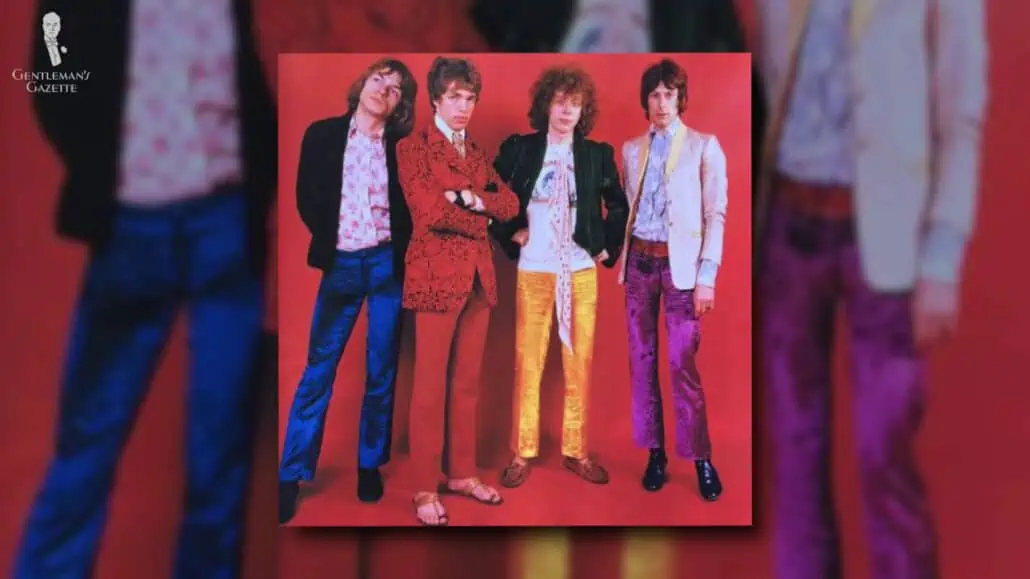
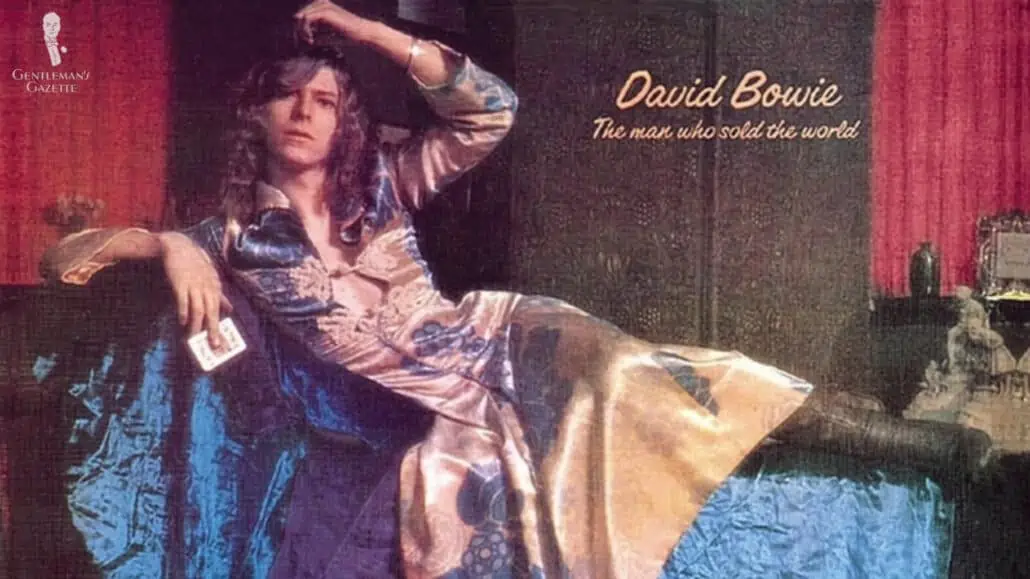
Essentially, as the 1960s went on, there was no real standard uniform of dress for everyone anymore and more and more people were increasingly just wearing what they wanted, when they wanted. Be it formal, informal, trendy, traditional, conservative, or unconventional, it was all there.
Fashion Fads of the 1960s
Of course, given our area of expertise here at the Gentleman’s Gazette, we’re going to be focusing mainly on the more traditional styles of menswear of the 1960s like shirts, ties, jackets, and so on. But first, we’ll take a bit of a detour to give a rundown of some of the most popular clothing subcultures of the 60s.
Mod Style
The “modernist” or “mod style” was popularized by The Beatles and was an outgrowth of the 1950s Teddy Boy styles, which we’ve discussed previously in other posts.
The mod style actually still remains strong in some areas today, but the mods of the 1960s were wearing Italian-styled cuts that featured jackets that were still a bit on the boxy side, but trousers that were much more tightly fitting.
The philosophy here wasn’t to rebel against tailoring or the traditional, but to embrace it and make it your own. These tighter-fitting suits were also accompanied by bolder colors and patterns as we mentioned before. Additionally, polo shirts, turtlenecks, spear point collars, and tab collars could all be worn.
Fabric-covered buttons were also popular with the mods and higher-necked, double-breasted jackets and crumby overcoats were also widely seen. And if you’re wondering about mod accessories, well, how about a Vespa scooter with as many lights and mirrors as you could possibly have.
Bohemian/Flower Power
Next up is something of the opposite of the mod style, “the Bohemian” or “flower power movement.” Relaxed, eclectic, and, carefree it was, for lack of a better word, the uniform of the non-conformist.
Famous wearers of this style include Jimi Hendrix and Jim Morrison but, again, it doesn’t really overlap too much with classic style, so that’s all the more we’re going to say about it today.
Greasers
Still around from the 1950s were the “greasers,” also called “rockers” in the UK. Of course, they listened to rock-and-roll and rode around on their motorcycles in clothing like T-shirts, leather jackets, blue jeans, boots, or converse sneakers. For more about the greasers though, you can check out our previous installment in this series on the 1950s.
Skins
The 1960s also gave birth to the “skinheads” or “skins,” a subculture, which originated in the working-class neighborhoods of London. While the skins, of course, get their name from their shaved heads, they were originally called “hard mods” as an outgrowth of the mod movement because of their rough demeanor.
Typically working-class boys who couldn’t afford expensive clothing, they were frequently seen wearing things like Doc Marten’s boots and jeans with braces or suspenders, as well as button-down shirts. Coming from typically low-income areas, the style was born out of a desire for practicality.
Many of these boys and men were working in manual labor jobs, so the shaved head meant that their hair wouldn’t get caught in machinery. It also, however, had the added bonus of not being able to be pulled if they got into a fight.
And, by the way, the skins of the 1960s are not to be confused with later “skinhead movements” of the 80s and 90s, which were co-opted by neo-Nazi and other racist organizations.
Space Age
And, of course, the 1960s were the apex of the Space Age, so there were also many futuristic or space-inspired fashions around. But, we won’t talk about those today.
1960s Classic Menswear
As usual, we’re going to focus on what the typical or average man was wearing in the 1960s with a focus on classic menswear.
Hair & Facial Hair
So, we’ll start here with hair and facial hair and start off by saying that you’ve probably looked at many 1960s photos, observed the hairstyles, and simply thought to yourself, “What were they thinking?”
At the start of the 1960s, though, the hairstyles were actually quite traditional, basically continuing on from 1950s styles and accurately depicted by shows like Mad Men. During the peacock revolution, many men’s hairstyles got longer overall and also, more bowl-shaped.
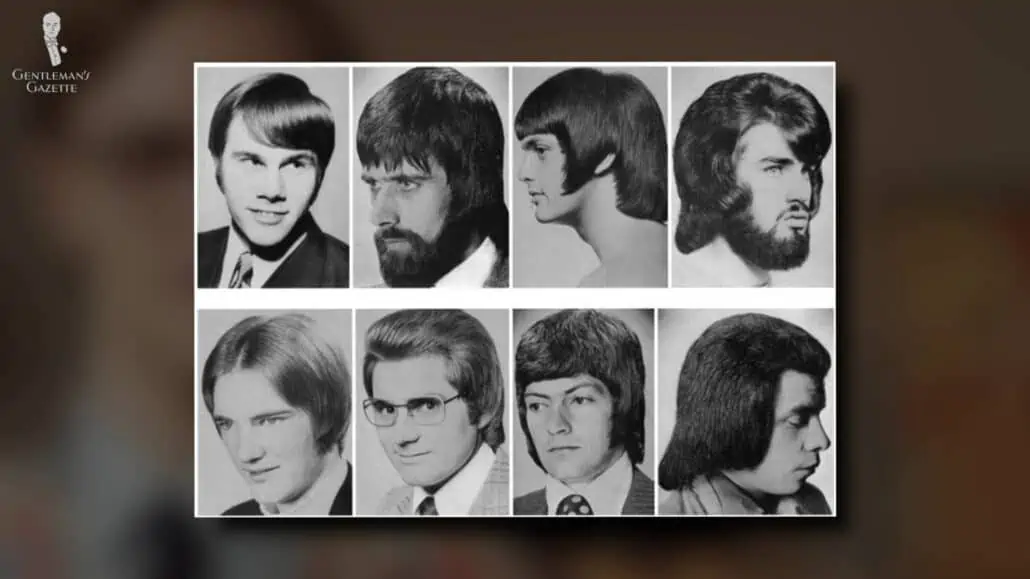
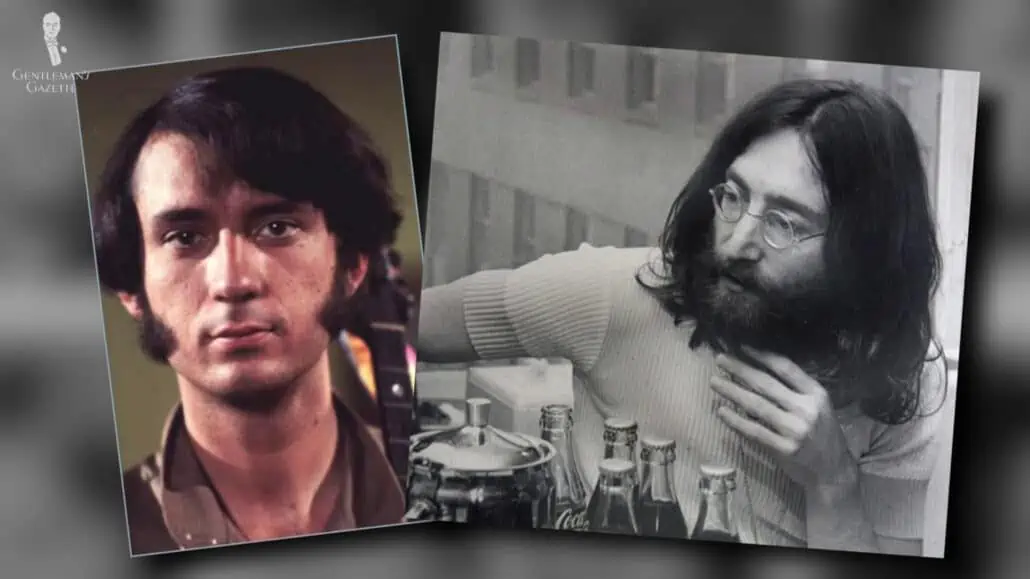
As far as facial hair is concerned, most men went clean-shaven with occasional beards or longer sideburns seen but, again, because this was a decade of individuality, men could do more or less whatever they wanted with their facial hair.
Hats
As hair became a greater component of self-expression then and also for many other reasons, hat-wearing wasn’t as popular in the 1960s as it had been in previous decades. This was the decade where JFK famously went hatless while giving his inauguration speech and you can consult our post on that subject for more information on that and why it wasn’t the sole reason why hat-wearing declined.
So, while they weren’t as popular, men definitely still were wearing some hats in the 1960s and the dominant styles were still the fedora and the trilby. Overall, both of these styles were growing smaller with narrower brims and shallower crowns. They were, of course, still readily enjoyed by older men with felt styles being worn in the cooler months and straw styles being worn in the warmer months.
In an attempt to appeal to the younger generations and their various subcultures, hats started to be manufactured in different fabrics, colors, and patterns, including tweeds, cottons, plaids, herringbones, two-tones, and even suede and leather varieties.
Trilby brims, in particular, were shaved down quite dramatically and angled quite severely as well in an attempt to be more fashionable. But, this, along with the cheaper materials that these hats were being made from, led to a mass-produced, factory-made look and feel, which unfortunately still persists with the trilby, in particular, to this day.
Other headwear of the decade, of course, could be exemplified by beatniks and hippies using things like scarves as headbands and so on.
Shirts
Shirts in the 1960s were wild, to say the least, as men were definitely wearing much more vibrant colors and patterns in their shirts than ever before. Indeed, shirts could come in almost any pattern imaginable from narrow to wide stripes, polka dots, checks, tartans, paisley, tiger skins, leopard spots. Really, anything.
Conversely, though, solid block colors were also trendy at the time and men increasingly tried to match their shirts exactly to other elements in their ensembles.
Conventional shirts, polos, turtlenecks, and cardigan sweaters were all sold in coordinated colors. There were matching sets of shirts and socks and, perhaps worst of all, shirts and matching ties.
Also, 1960s shirts were worn fitted and tight and you can learn more about the cut-to-fit body shirt in our post on fashion fails.
In terms of collars, the point collar was still most popular as opposed to things like the rounded club collar, but the size of the collar could vary greatly – everything from a small collar to an exceedingly large one.
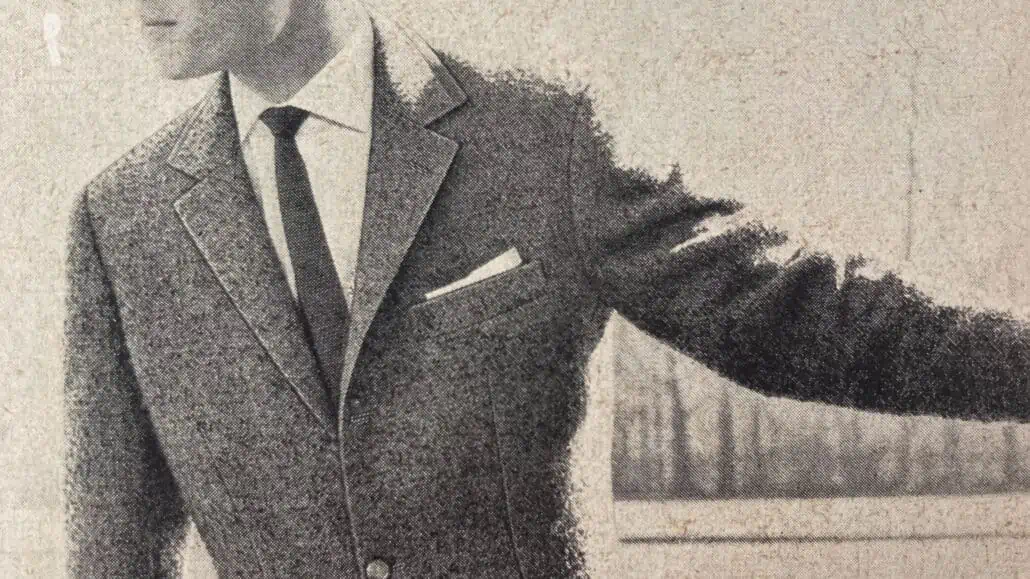
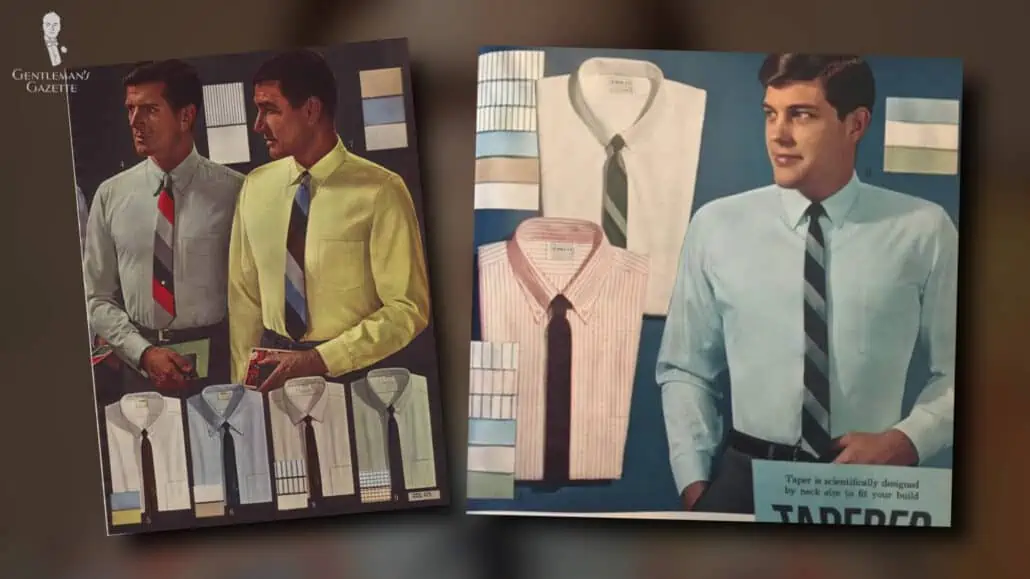
For business, meanwhile, shirts were still more on the conservative side in pastel colors and perhaps with small stripes or checks. But, that’s not to say that every man was always wearing a conventional button-up shirt with his jackets.
As, of course, the turtleneck sweater and jacket combination was widely popular in the 60s, and it can still be pulled off today as Kyle often demonstrates.
Suits
Despite all of the psychedelic colors of the 1960s, business suits were surprisingly still pretty conservative. The large shoulder pads of the 1940s and early 50s were gone by this point, but men were still wearing jackets largely inspired by late 50s styles.
The early 1960s suit was characterized by a three-button jacket with rounded quarters and a high gorge
– all popular style hallmarks of Italian tailoring. However, the Anglophilia we mentioned earlier also meant that, by the mid-60s, Americans were wearing classically British-inspired styles with wider fits and country clothing-inspired patterns.
Still, there was mixing of multiple cultures here as the shorter, Italian-style jackets, playfully called “bum freezers” in the UK, also spread to the US. Even today, Italian, British, and American tailoring styles are still battling it out. And for the differences between the three, you can take a read about the topic on our guide on tailoring traditions.
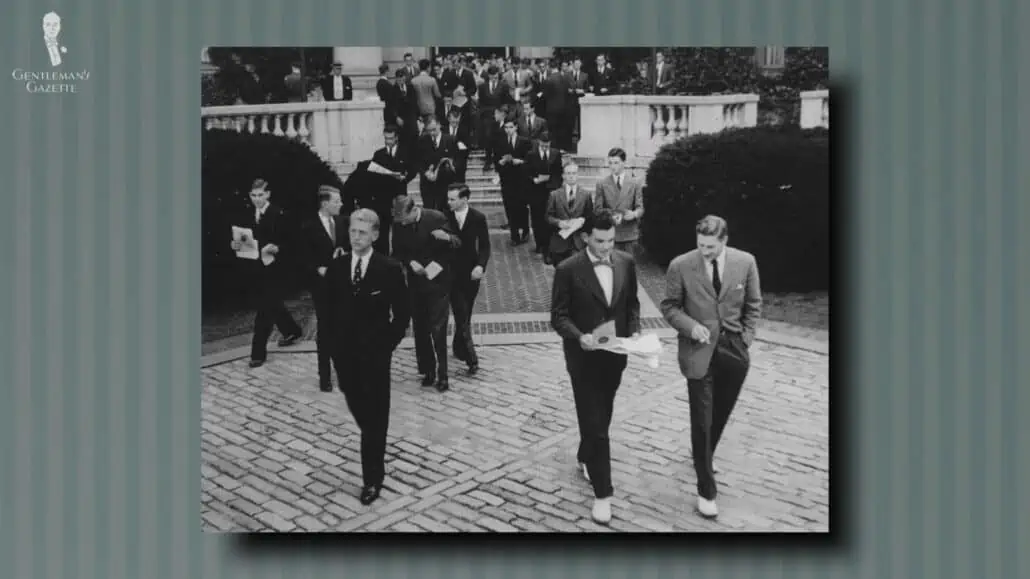
Also, the Ivy League style, which was established by students at elite American universities in the 1950s and was, in turn, inspired by British styles of the 1920s, became popular in wider society in both America and Britain.
Even in business settings, men could now commonly be seen wearing blazers and slacks instead of two-piece suits, and these jackets could feature bold patterns, including checks or wide stripes. This was an outgrowth of the earlier rowing blazer and, indeed, jackets also featuring gold buttons were popular. However, all of these style hallmarks would begin to change by the mid-1960s.
Essentially, young men were bored of the stuffy and dated ideals of masculinity that had still been hanging on since the Victorian Era and, in establishing their own identities, look to subvert these societal rules and perhaps even the idea of masculinity itself.
As we mentioned before, many pieces of clothing would blur the lines between genders and, overall, take on a more unisex style. In addition to wild colors and patterns, things like velvet and frills would become increasingly more common.
Fashion boutiques in London, such as Mr. Fish and Blades, would marry the old style with the new, crossing Western fashions with cultures from around the world, and providing a new spark in tailoring. This led to a huge variety of unique garments. Frankly, too many to list here. But, to give you a taste – silk and velvet trousers and jackets, rainbow-striped suits and coats, zip-up jackets, roll-neck jackets, jackets without collars or lapels, double-breasted jackets with huge lapels, leather jackets, and Nehru jackets.
So, while some men were still wearing more traditionally-styled clothing at this point, it was becoming more colorful and eccentric.
By the end of the 1960s, many were troubled by the violence that they had seen from the Vietnam War, as well as the other social struggles of the time, so they were becoming more ethically-minded and less consumerist overall. This led to a renewed interest in antique or vintage fashions, focusing on making the most of what was already available rather than simply chasing the next new thing.
So, the late 60s was the true beginning of the vintage fashion movement that, of course, still persists today. Indeed, if you’re wondering why good condition vintage clothing can be so expensive these days, it’s because a majority of it was bought up in the 60s and 70s by shop owners who would travel door-to-door and offer people money on the spot for their old clothing.
This is when people really began hunting for 20s, 30s, 40s, and even Edwardian or Victorian styles. As just one example of this revival, we can look at frog pockets, originally a trend that went out with the Edwardians, making a return on some 1960s trousers. Frog pockets are characterized by sitting diagonally across the hip rather than being made part of the side seam.
Pants
Speaking of trousers though, let’s continue on with our breakdown by taking a look at what would typically be found on the legs of the 1960s man.
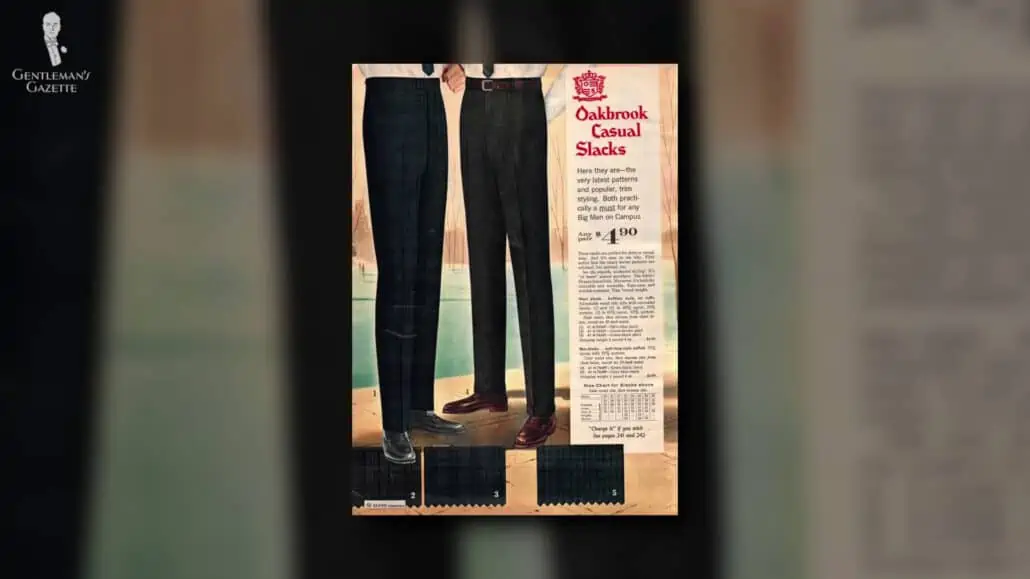
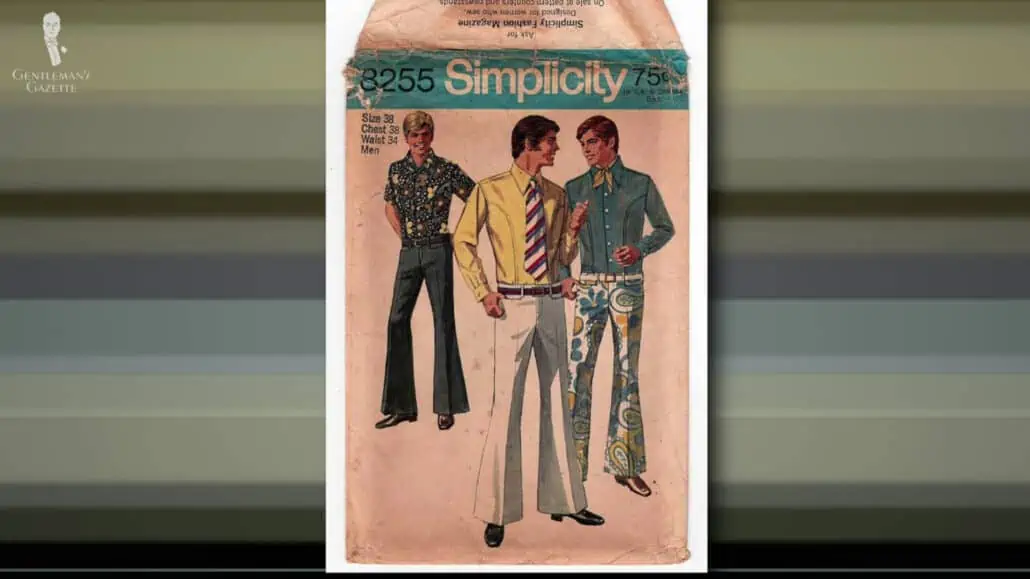
As we alluded to before, the trousers of the 1960s were famously tight-fitting, especially in the hips and the upper thigh. Thanks to this fittedness, pleats were no longer on-trend. Speaking of trouser trends though, bell bottoms, which flared out at the bottom, sometimes widely, and could even touch the ground, would become popular in the mid to late 60s into the 1970s. For the mod or business styles though, trousers were typically just cut straight at various widths.
The most important change to trousers in the 60s though, because it’s still felt today, is the lowering of where the trousers sat on the body. Inspired, in part, by counter culture movements wearing jeans, which were formerly workwear, as everyday wear, many fashion houses and other clothing manufacturers started making other styles of trousers that sit lower on the body, similarly to jeans, at the hips rather than the natural waist.
Suit trousers didn’t get quite this low and, indeed, not as low as they are today, but they were lowered to about belly button height. Many trousers at this point were commonly worn with belts instead of suspenders, but the fashionably minded would opt for side adjusters instead. And much like jackets, trousers could also come in a variety of wild and wonderful patterns and colors. These were casual fashions, not typically worn in a business or other traditional environment.
Ties
Turning next to ties, the beginning of the 60s saw very skinny ties, which were often knitted. These were very much within the mod school of thought and came in pastel colors, flecked patterns, and stripes among others.
Essentially, they were holdovers from the late 1950s. Unlike the 50s though, most ties in the 1960s were tipped. Previously, tipping ties had been more expensive but, with new and cheaper fabrics, as well as cheaper methods of production, it now became more inexpensive to tip ties than to leave them untipped. This also meant that most ties were fully lined and, unfortunately, many of them were 100% polyester.
You’ve probably sensed a pattern developing here and, indeed, when the peacock revolution hit, ties went wild too. Thanks in part to cheaper fabric printing methods, ties exploded with a wide array of crazy colors, patterns, and designs. Perhaps to accommodate these new louder patterns, ties also became wider and wider as the decade went on.
If you walk into a vintage store today, you can pick out a mid to late 60s tie pretty easily. Just don’t wear it to a wedding.
Men were increasingly wearing their shirt collars open in a more casual style, so scarves became popular once again, as did day cravats or ascots. Scarves could also be worn with neck rings, which was a revival of a 100-year old fashion, meaning that the 1860s style of the neck ring had come full circle. By the way, you can learn more about tie rings and other various other types of obscure or outmoded men’s jewelry in separate post.
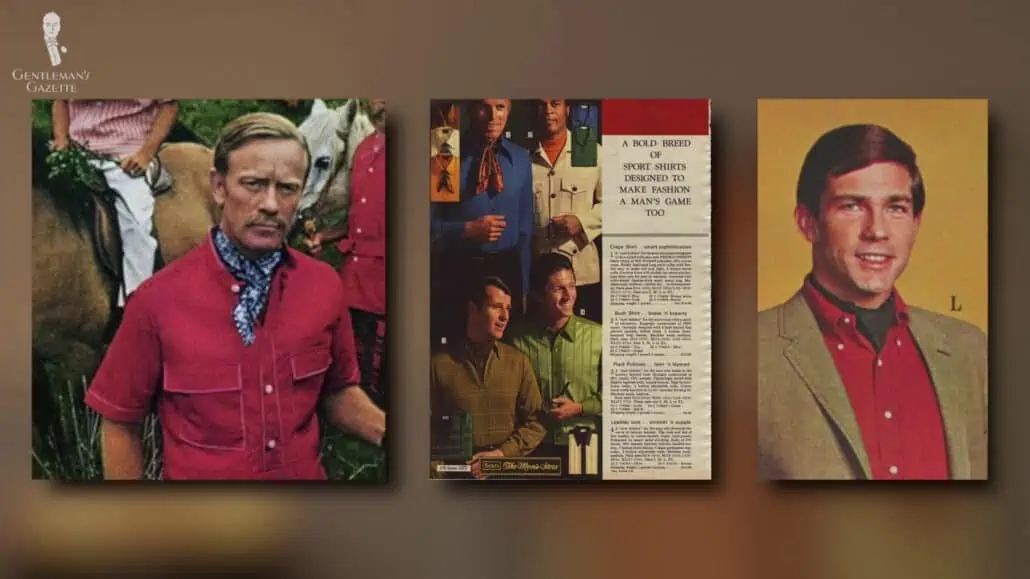
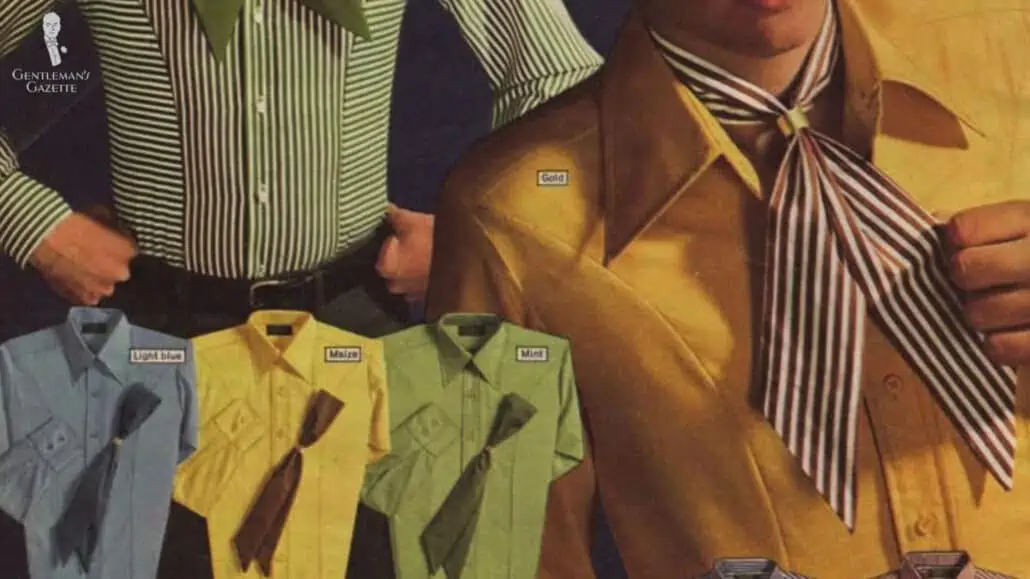
Shoes
For the most popular shoe styles prior to the 1960s, we’ve covered them in great depth in earlier installments of this series. So, today, we’ll just focus on what came about in the 60s in terms of footwear.
We will start here with one throwback as the Chelsea boot – originally created in 1837 by the shoemaker for Queen Victoria – experienced a renaissance in the 1960s. Originally called “paddock boots,” they were easy to get on and off because they featured no lacing, but rather elasticized rubber gussets on either side.
The Chelsea boots of the 1960s though were much more modern looking and popularized by – guess who – The Beatles. This made them arguably the most important shoe style of the time, especially among the mods.
And, as for the new name of the footwear, Chelsea was an area of West London that, by the 1960s, was home to painters, actors, artists, and socialites. They were collectively known as “the Chelsea set” and fashion boutiques catering to their tastes popped up in this area. Because many of these individuals started wearing the paddock boot again, it came to bear the new name of the “Chelsea boot.”
Another phenomenon of 1960s footwear is the so-called “Cuban heel,” a straight heel of medium height that, when put onto a men’s shoe, appears to be higher by comparison. Taller heels like this got their start to aid with getting on and off of horses and also, to provide more stability when walking.
By the 1600s, they were a signifier of wealth and power and they could also be seen on fashionable shoes and boots in the Victorian Era. The modern version, however, came to prominence again when it was featured on the feet of Latin American dancers and came to be known as the “Cuban heel.”
In the 60s, in particular, they were popularized to worldwide acclaim by The Beatles. Seriously, I think these guys touched everything when it came to 60s fashion. The Beatles commissioned their Chelsea boots with Cuban heels and the fashion spread like wildfire and, in particular, this combo is still known today as the “Beatle boot.”
Other shoes of note in the 1960s were monk strap shoes, suede shoes, sneakers, cowboy boots, and tassel loafers.
Conclusion
Following on from the 1950s then, the 1960s saw an explosion of subcultures, rebellious youth, and polarized fashion ideals and styles. There were many wild styles, of course, especially after the peacock revolution.
But, as we’ve hopefully illustrated, not every man was wearing bold colors and patterns all the time or all throughout the decade. Paisley trousers and velvet jackets weren’t for everyone after all.
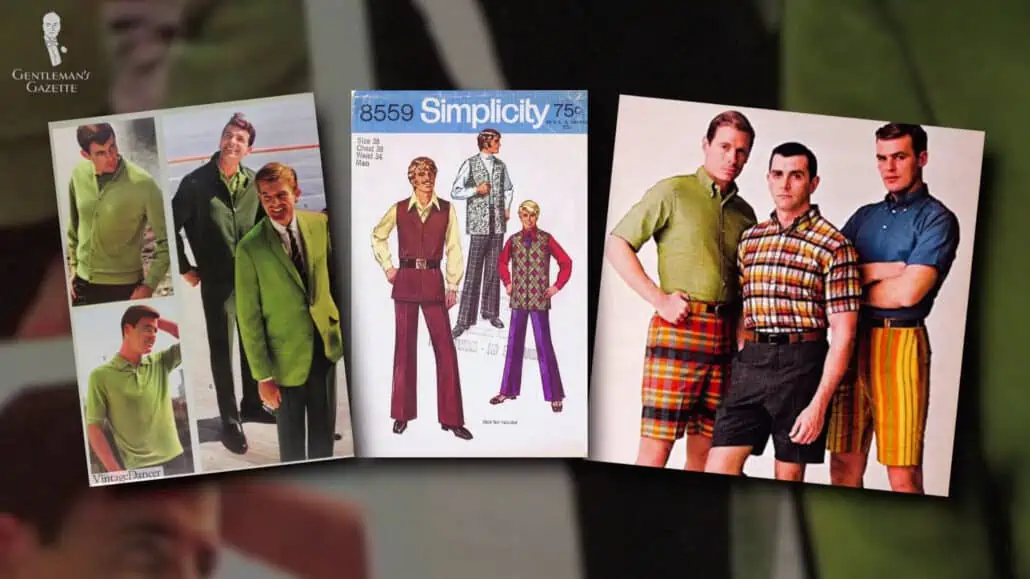
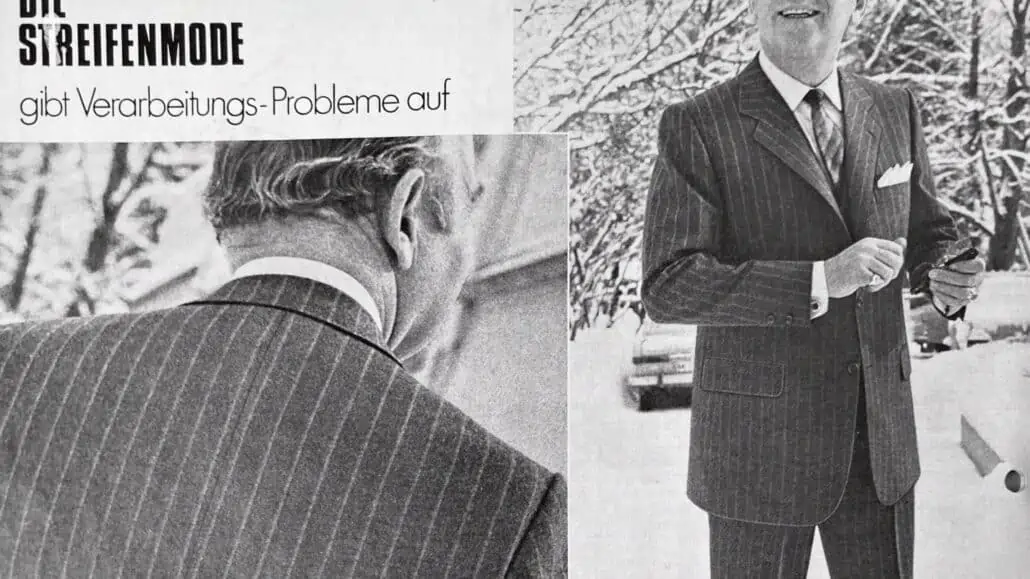
If you’d like to see us take a look at any of these subcultures in greater detail in the future, just let us know in the comments and, perhaps, we can take another swing at them later.
Outfit Rundown
Today, I’m wearing a look inspired by the Ivy and mod styles that we discussed today. The central element, of course, is my bold, plaid jacket featuring tones of blue, red, brown, and beige. I’m wearing it over a pastel blue shirt and, to ground the outfit while maintaining the color feel, my trousers are navy blue in a bird’s eye weave and are also relatively close-fitting. This combination of wider jacket and tighter trousers then directly mirrors the styles of the 60s.
The trousers are flat-fronted and they also feature side adjusters. I’m wearing a simple pair of silver cufflinks today with an understated geometric design and, while they don’t happen to have tassels, my dark oxblood penny loafers fit into the color feel as well as the Ivy style that I’ve gone for.
My vintage pale blue pocket square features a Glen check pattern, but I’m wearing it in a point style today, so what you’re mainly seeing is the pale blue color as well as the burgundy contrast edge.
My remaining elements today are all from Fort Belvedere and these would include my burgundy mini carnation boutonniere, my two-tone solid socks in dark blue and red, and my navy blue knit tie, which is thin in width and also features subtle red stripes.
Also, in just a slight nod to the wilder hairstyles of the time, I’ve elected to leave the product out of my own hair today and go for a more natural look.
For all of the Fort Belvedere accessories I’m wearing, you can take a look at the Fort Belvedere shop here.
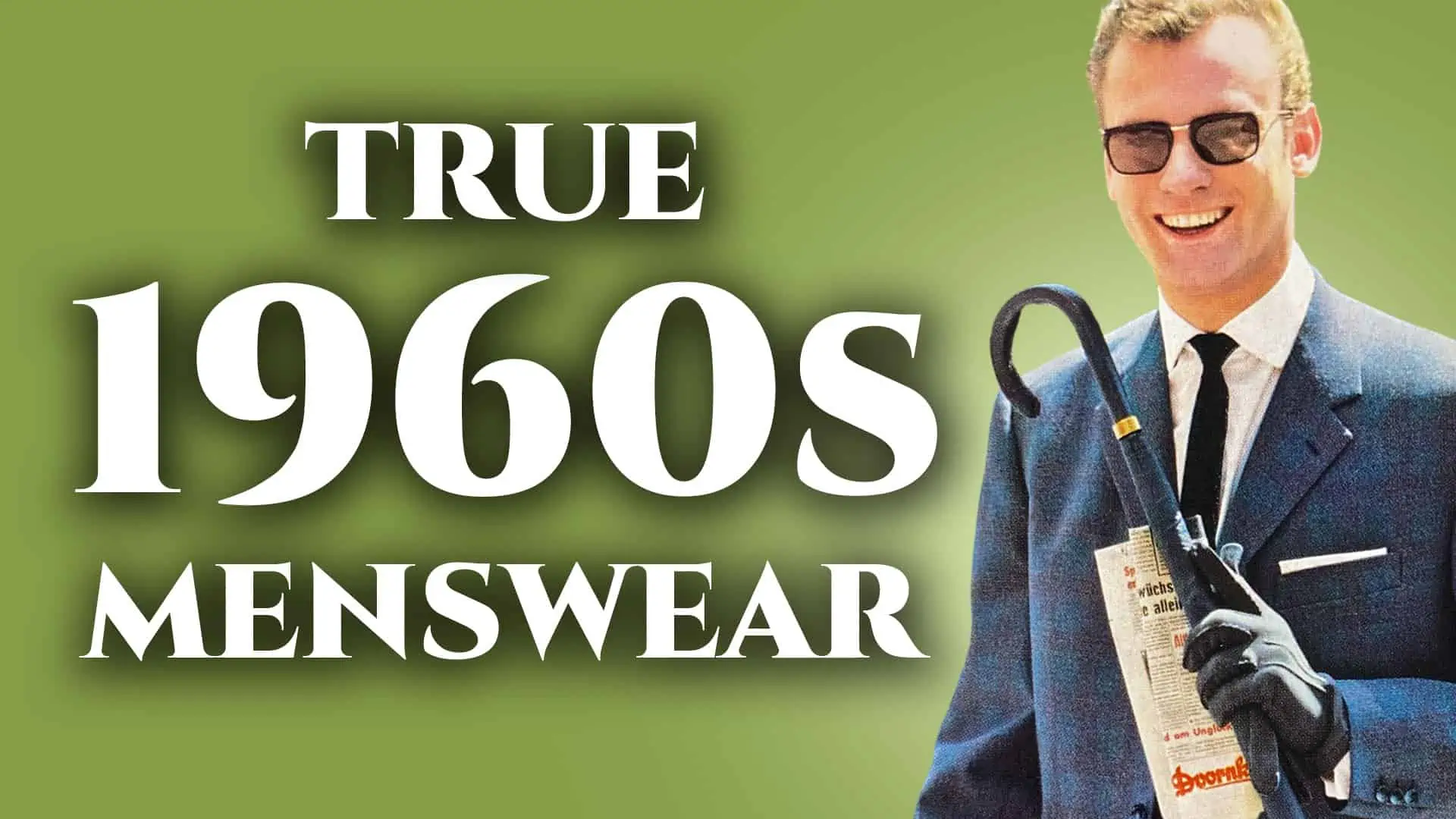
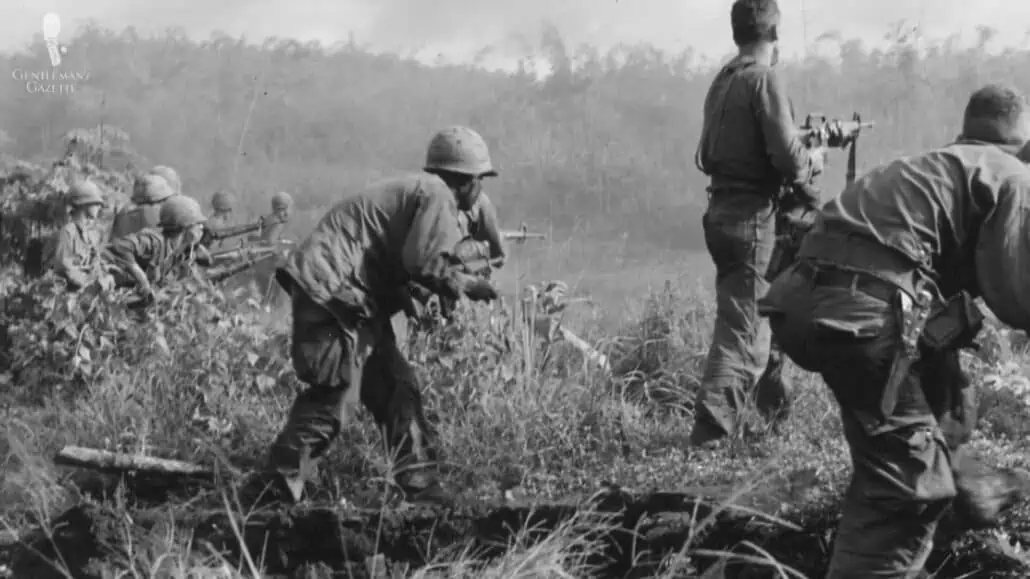
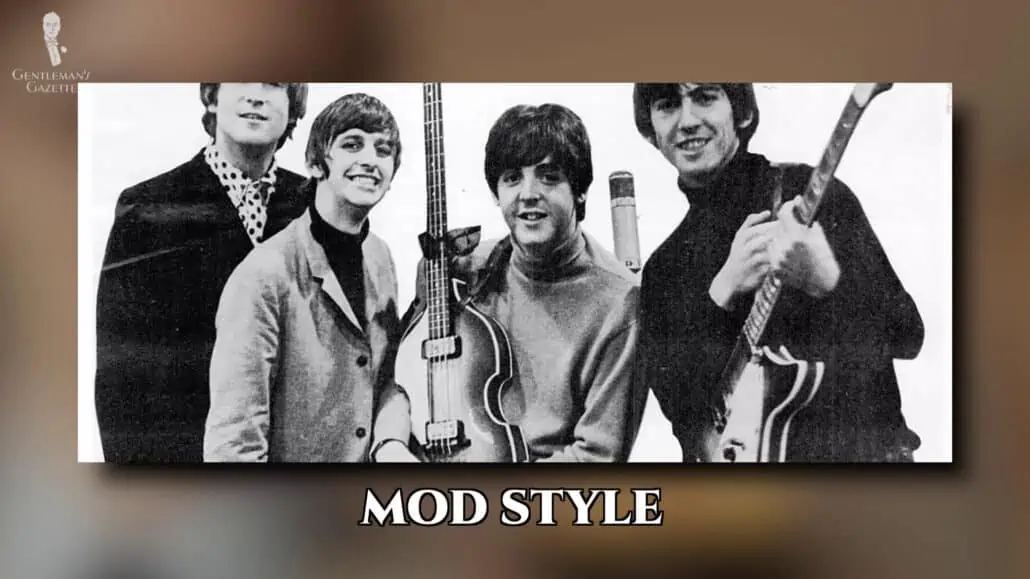
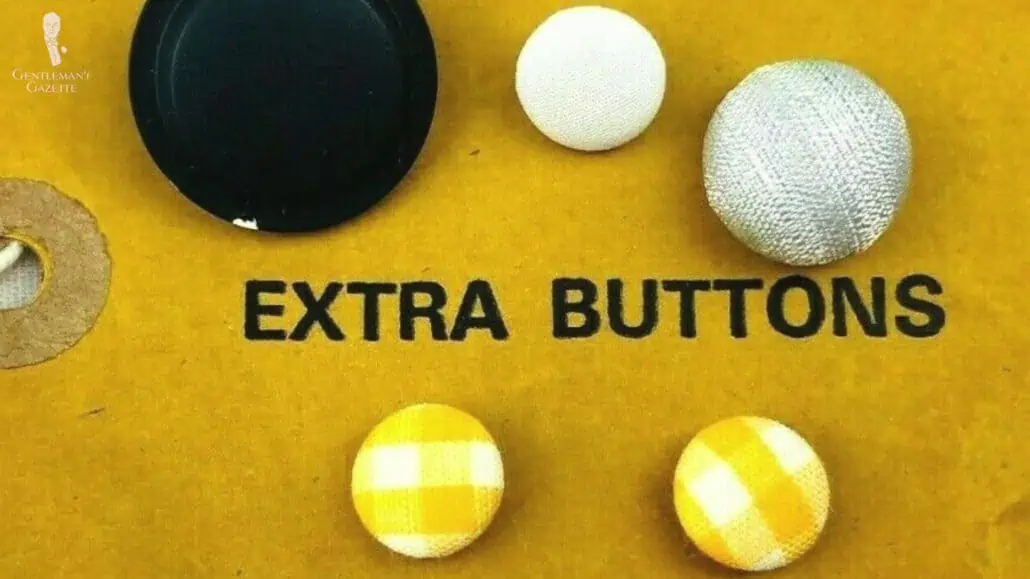
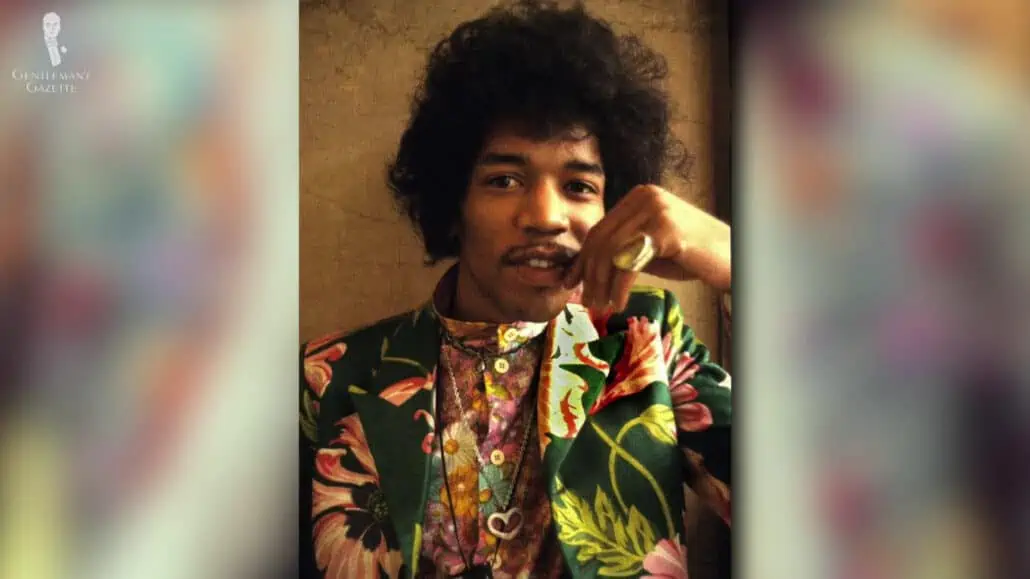
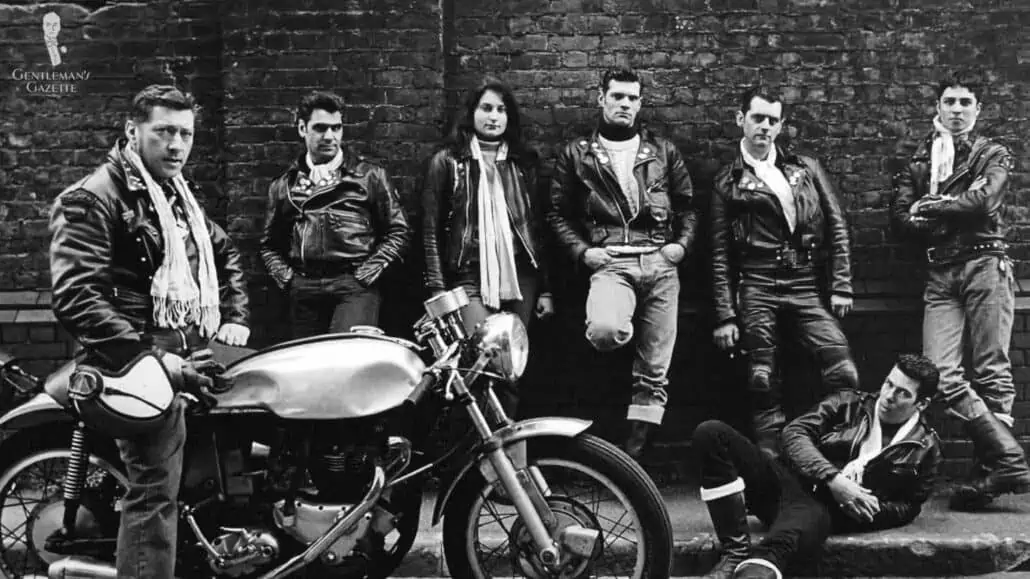
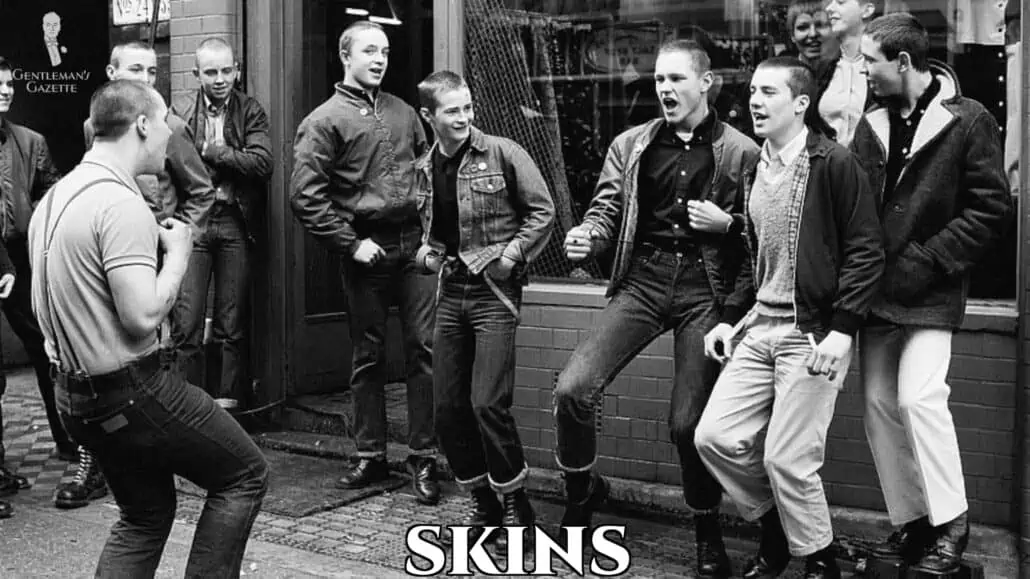
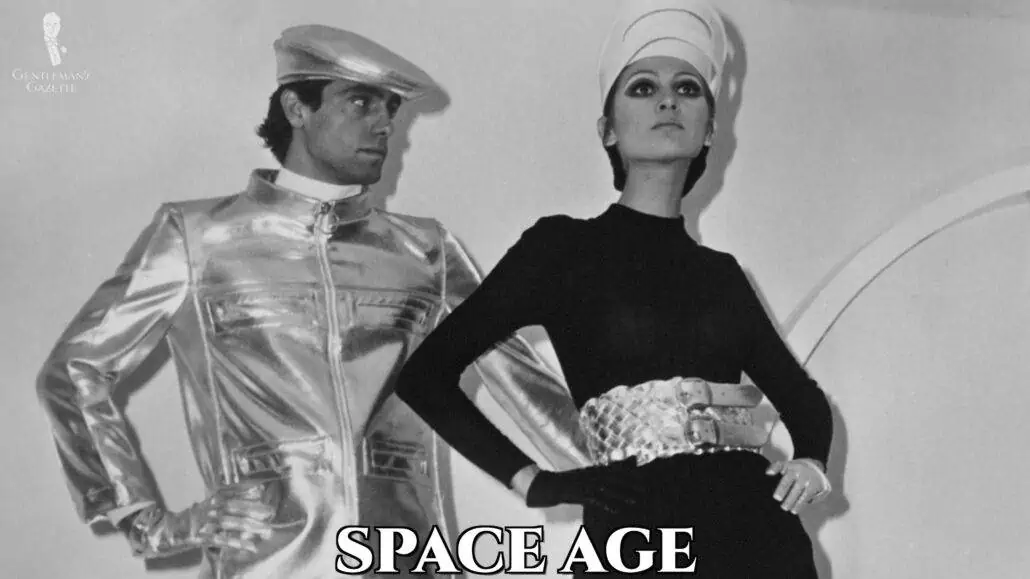
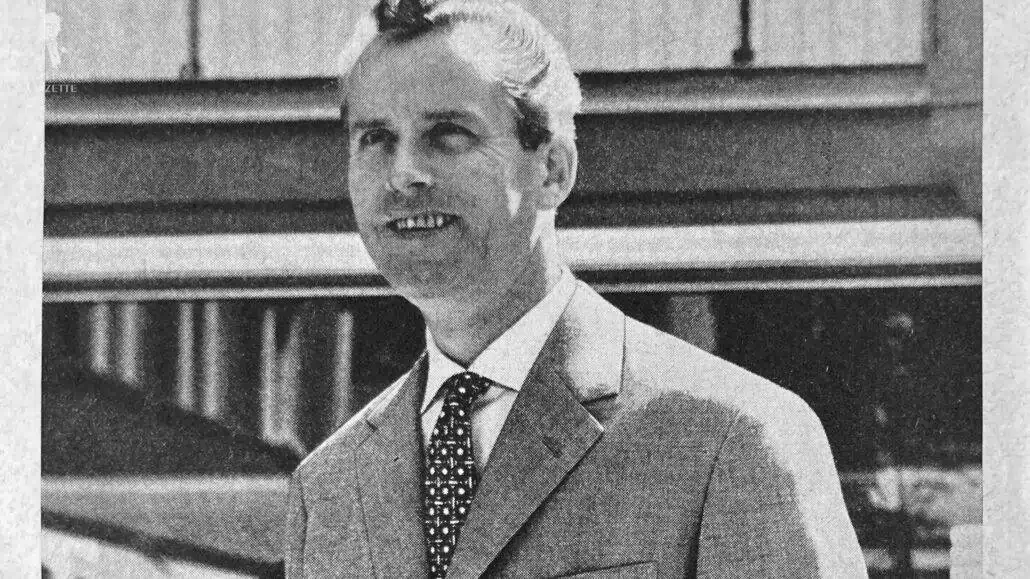
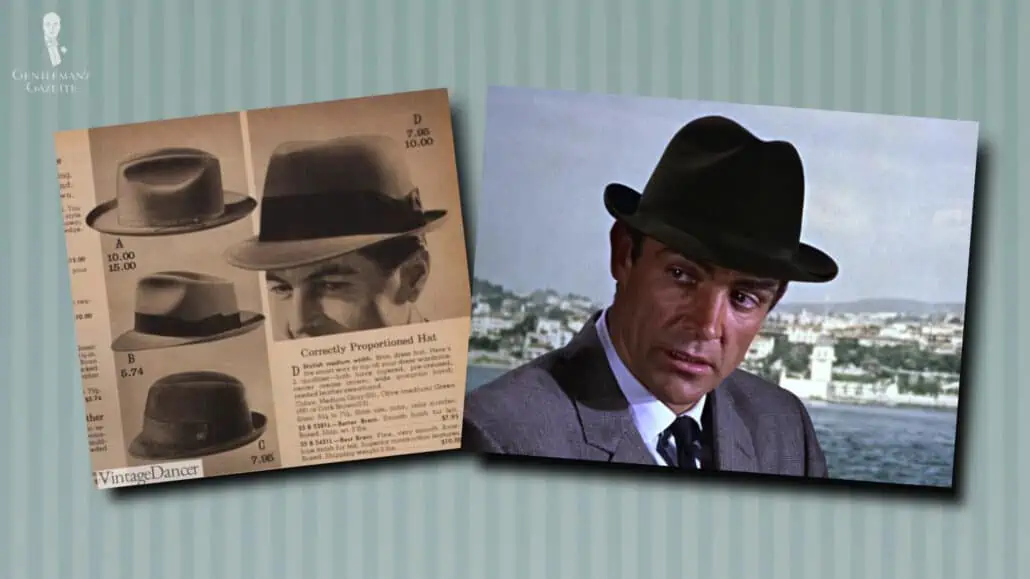
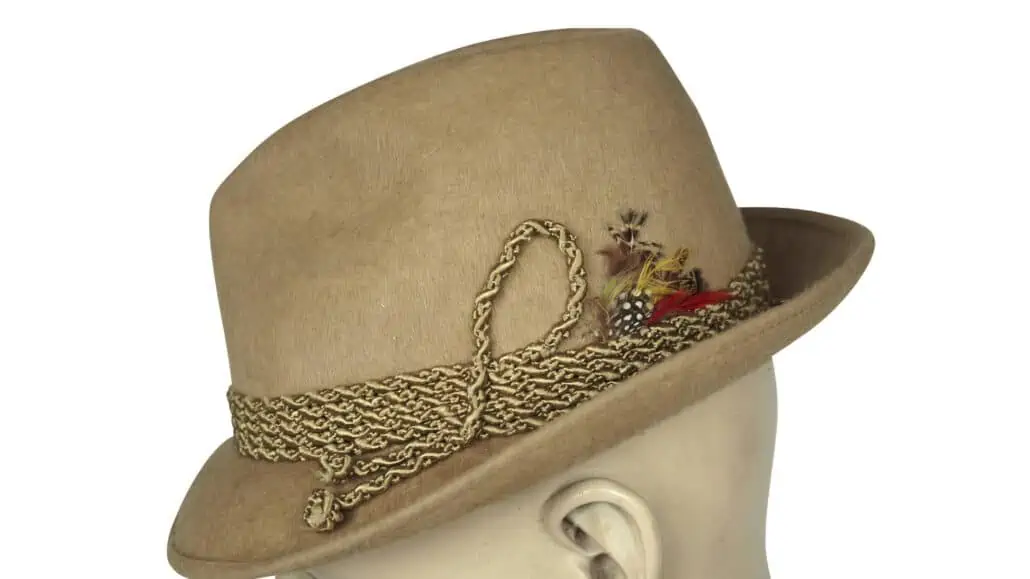
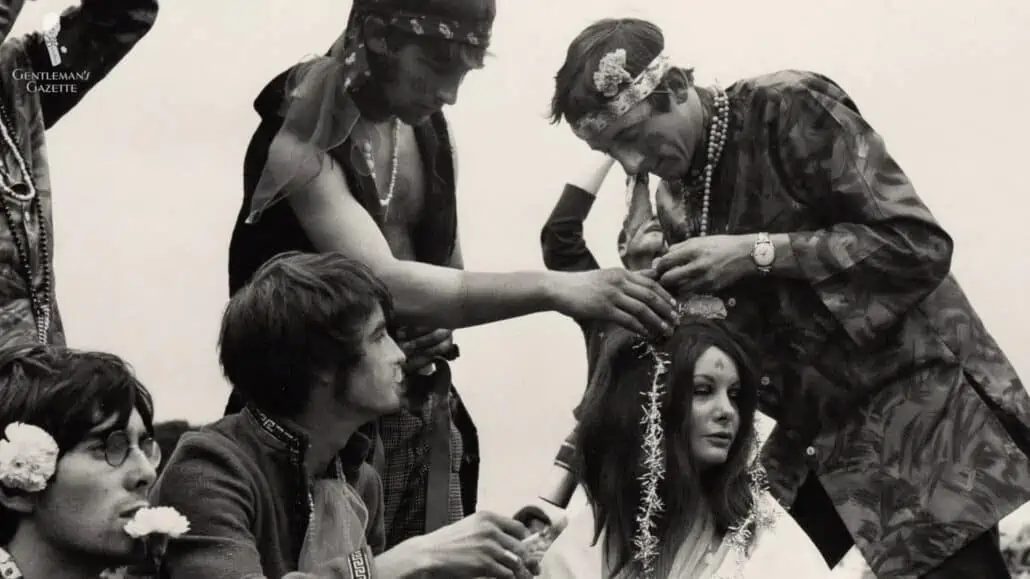
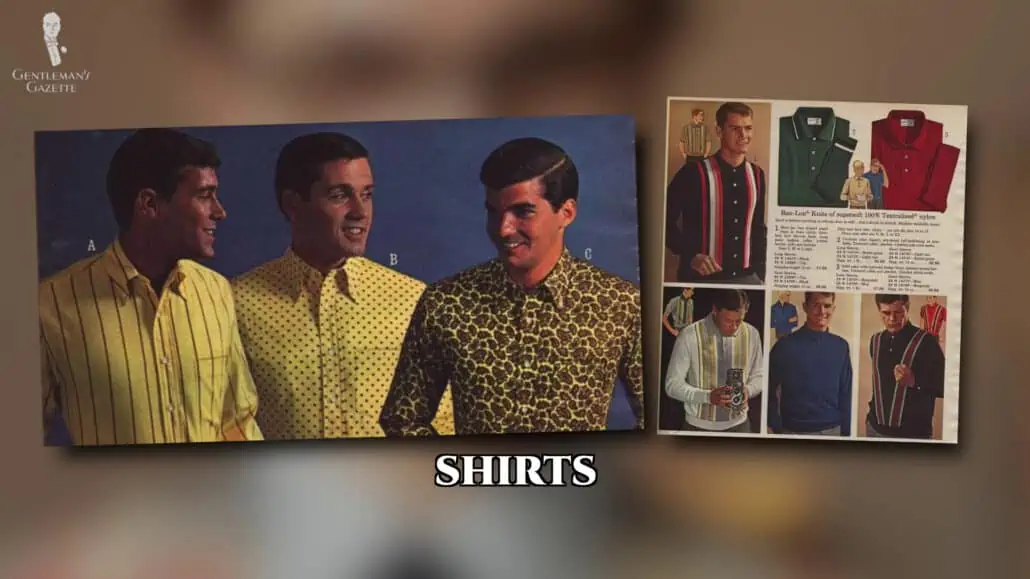
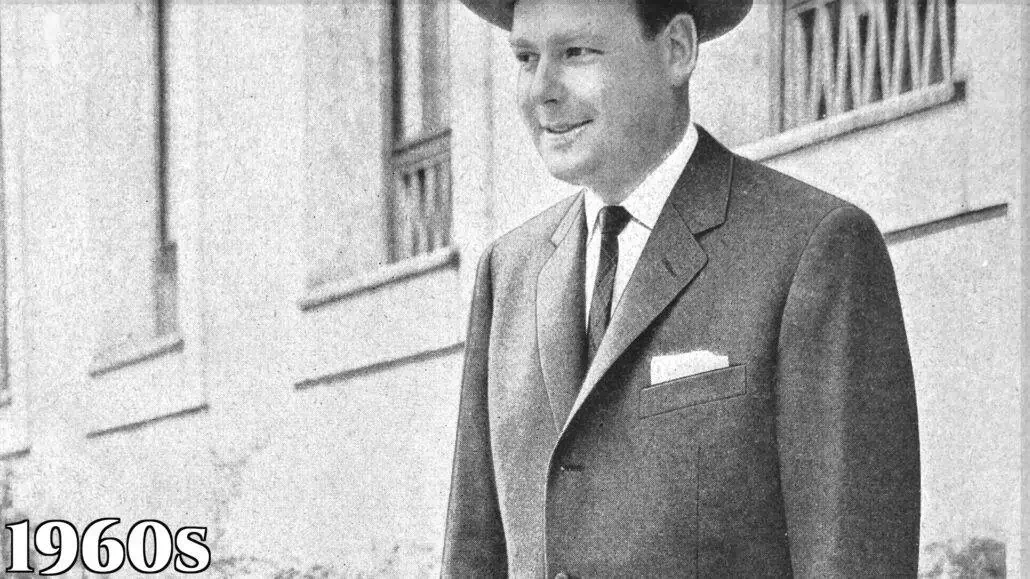
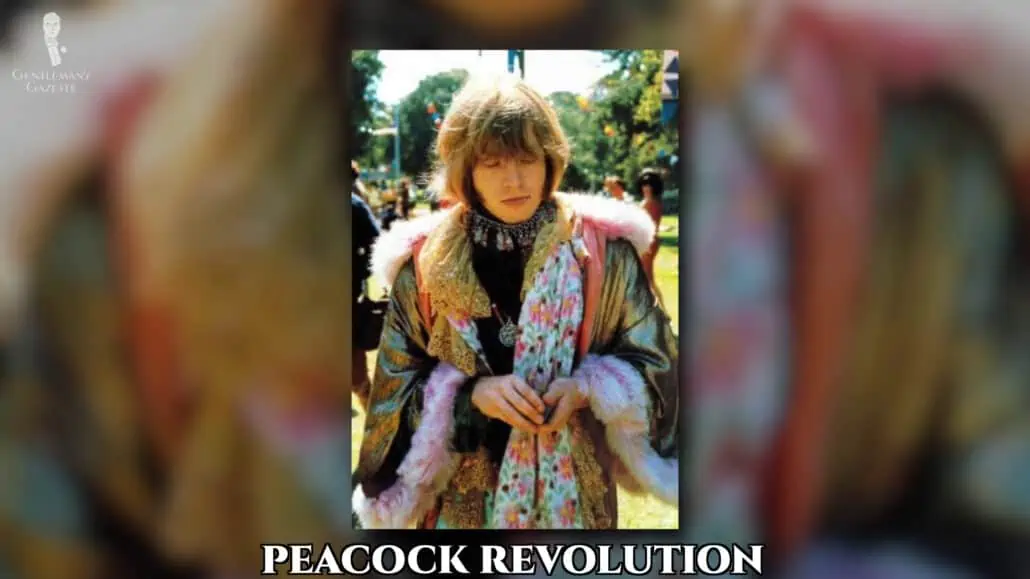
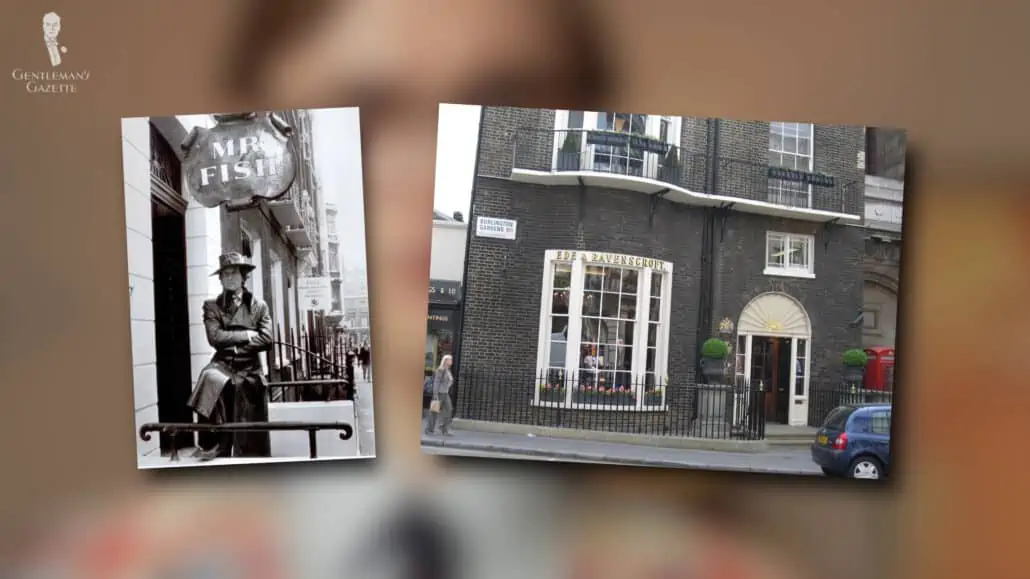
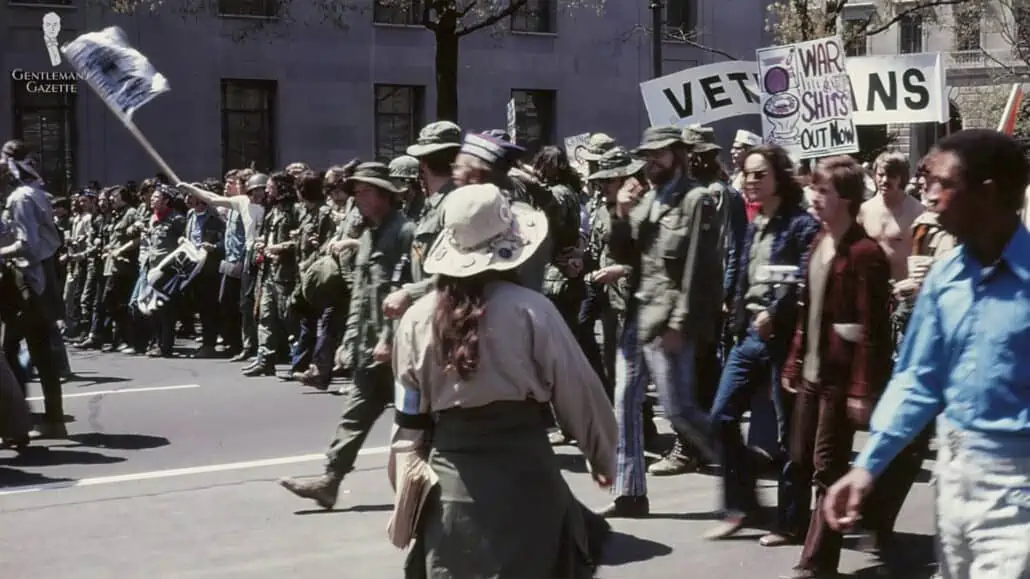
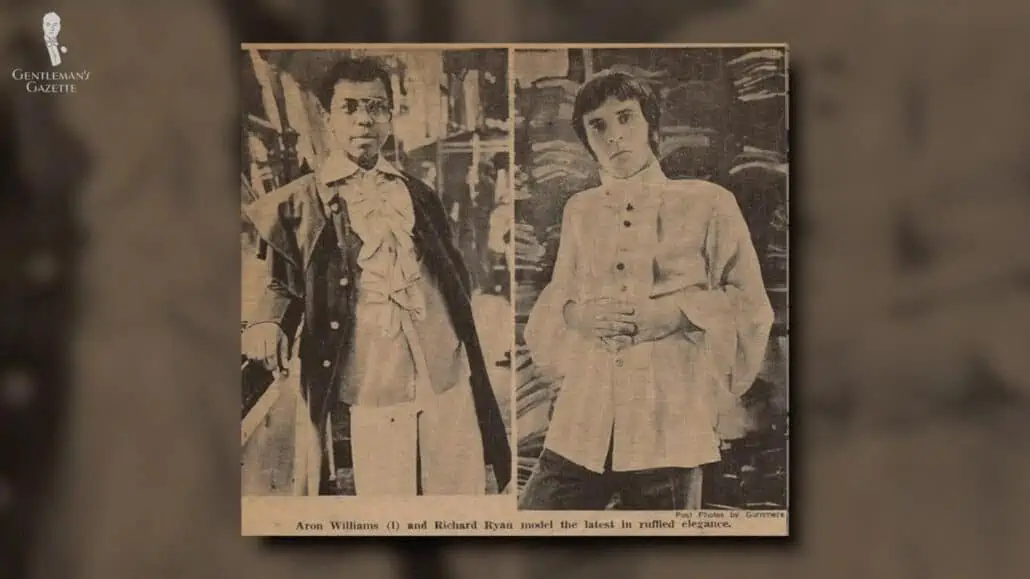
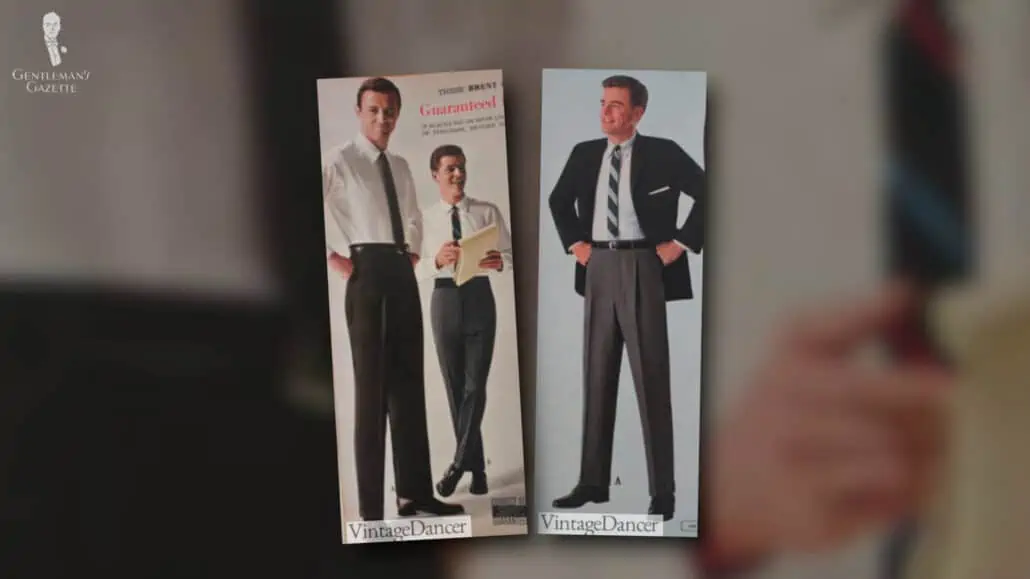
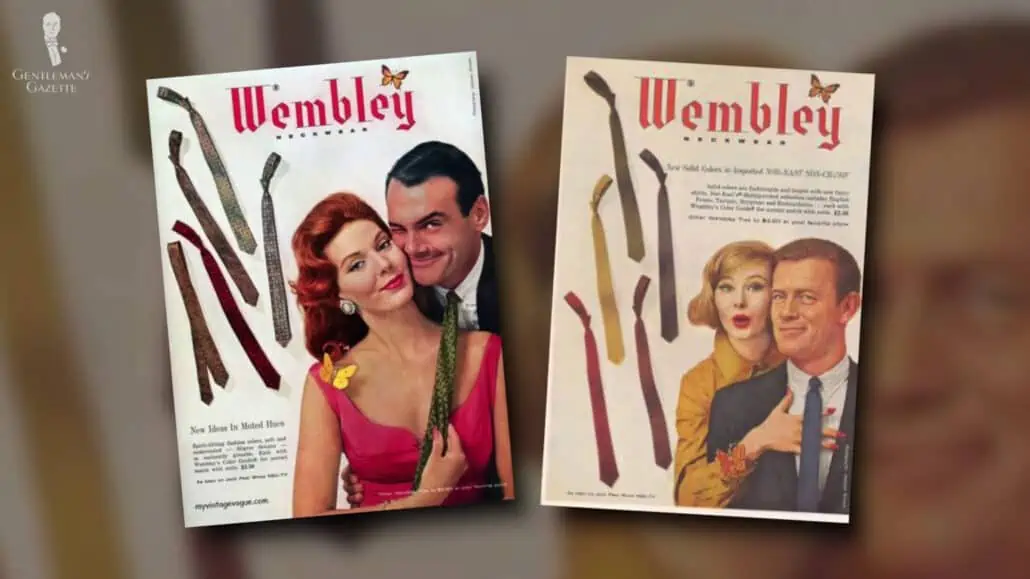
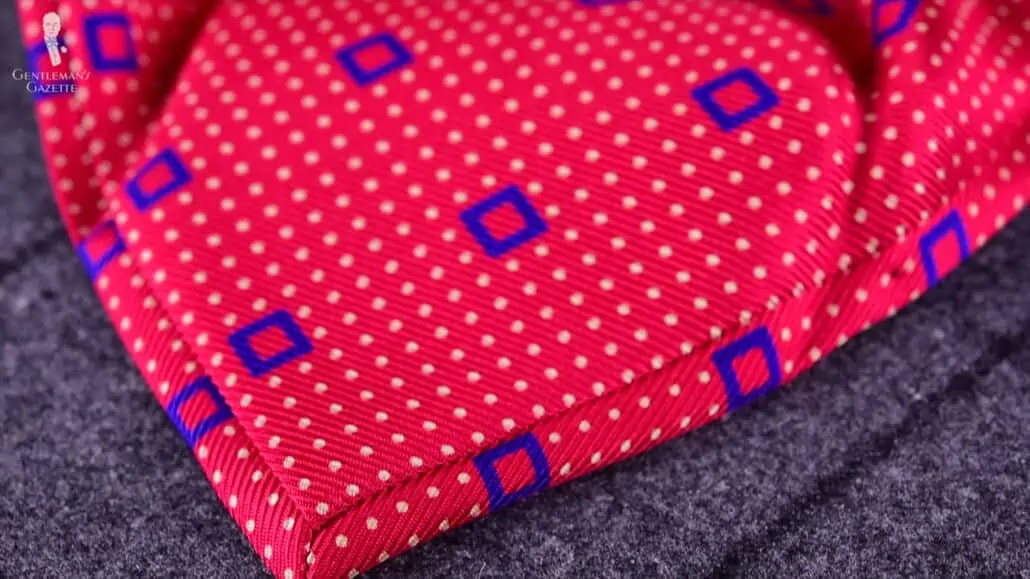
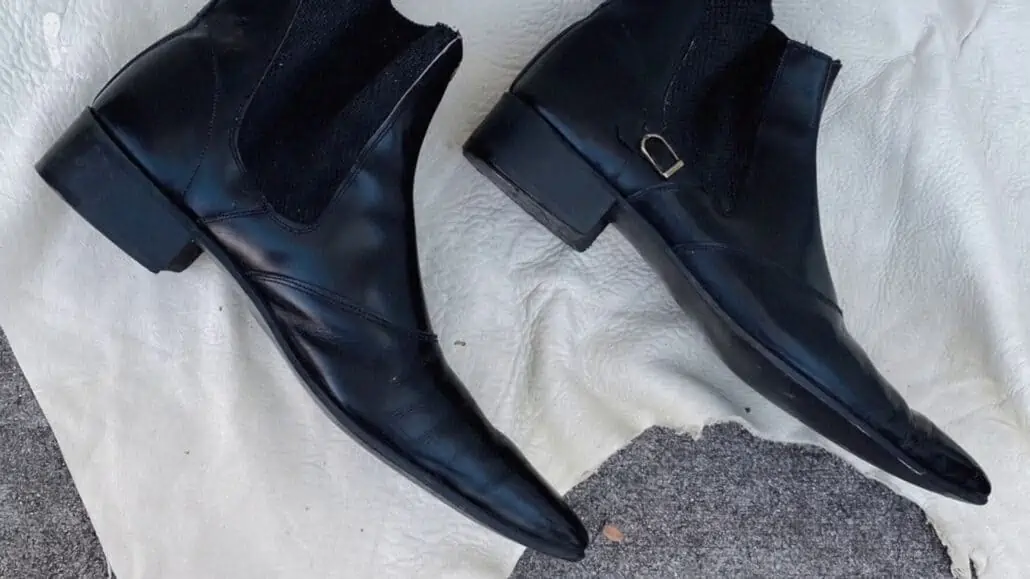
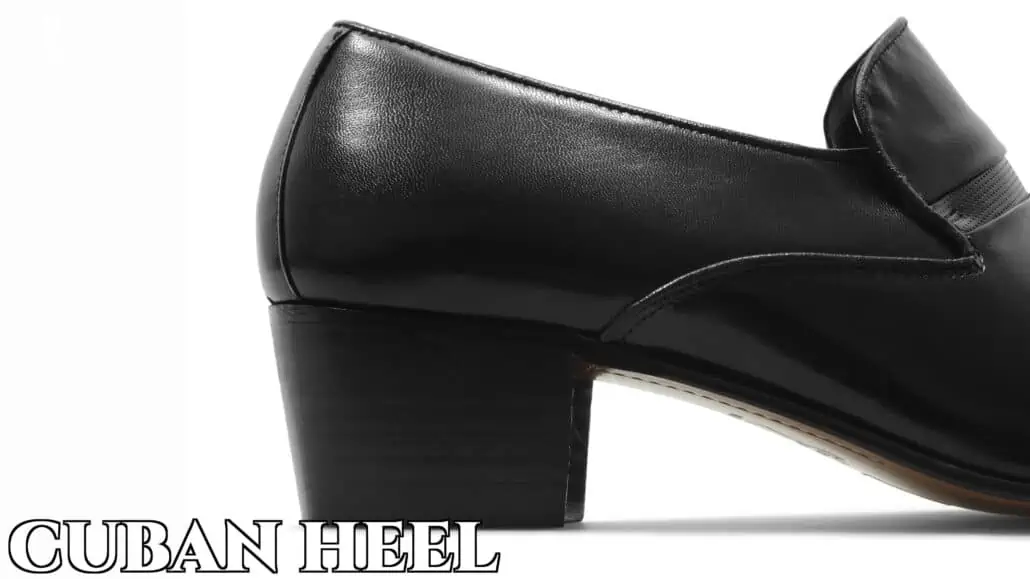
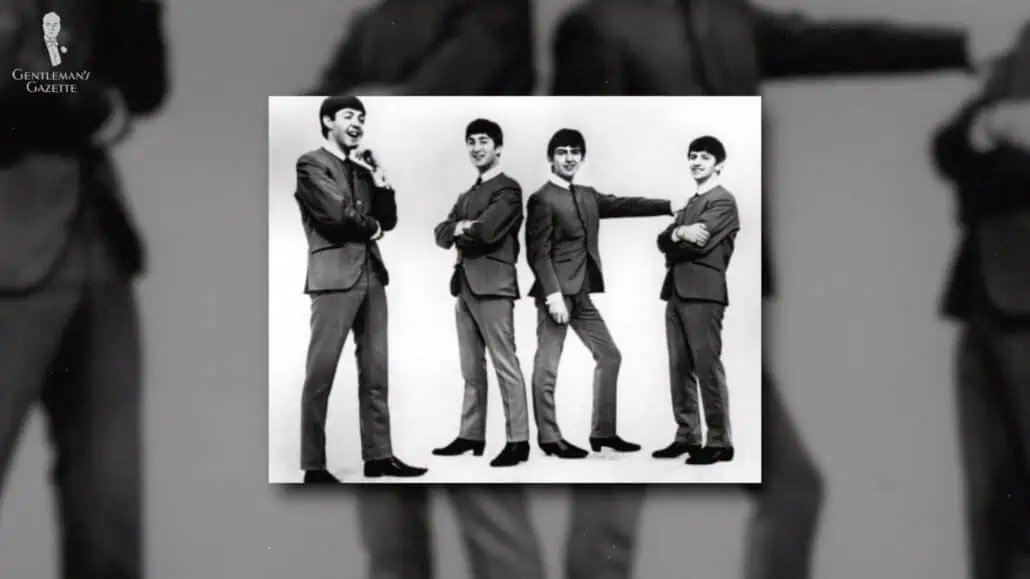
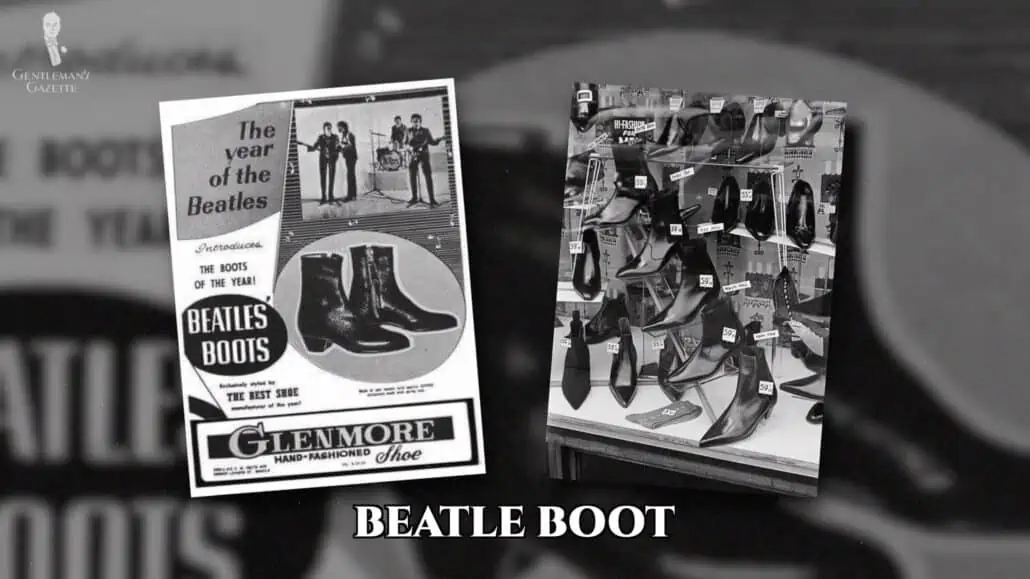
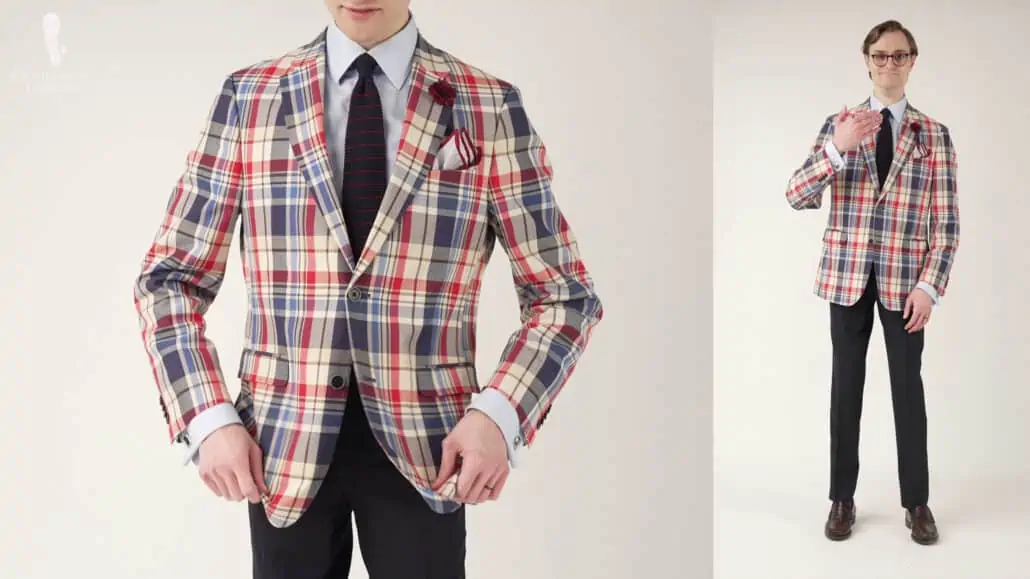
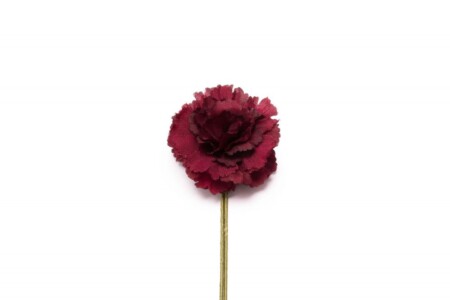
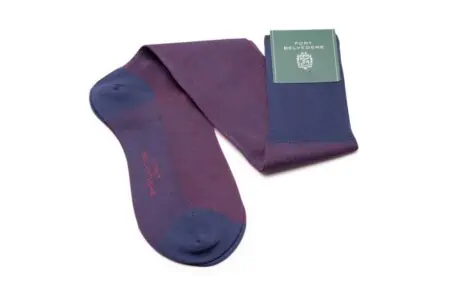
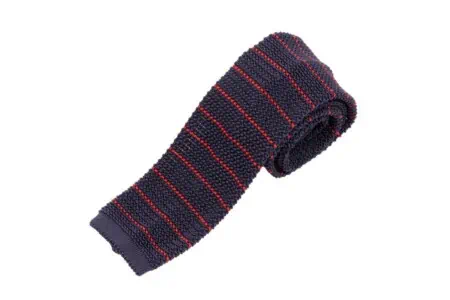
You should have a look at Patrick Macnee alias John Steed in the Avengers. The most fashionable male you can get for this period…
Absolutely agreed. Effortlessly impeccable. The Avengers and The Prisoner pulled off as much class and intrigue as the Bond series ( on a *fraction* of the budget )
The Forward “fashion” of the 60’s, like just about everything else emanating from that decade in retrospect, is vastly overstated. My father cut the lawn with a tie on and while wild happenings might have been going down in The Haight Ashbury District and magazine covers, the majority of Americans still dressed conservatively.
And likely because adults of that era weren’t about to tolerate pot symbols, shaggy hair and tie dyed everything in *their* households is precisely WHY they all congregated in highly concentrated, highly visible hotspots. All of which gave a very distorted impression of these narrow influences having some sort of broader impact? The 70’s were a different story…
Nehru’s with those big ugly ass chain medalions and turtlenecks under it that made you look like a hippie Catholic priest . Somehow I still miss them. I never had the jacket but I did have the shirt. Dayglo green with black trim along the collar, cuffs and button holes and gold braid in the trim. Close your eyes and since it was so bright you could still see it through your eyelids. I even had the Nehru pajamas. Far out man.
The writer apparently never got in close proximity of a university or Men’s College in the South in the 1960s. That’s the time I matriculated.
I remember Gant shirts with locker loops. Weejuns to wear. Madras shirts, pants, and jackets, not all worn at the same time! the ubiquitous blue blazer and tan chinos
The young man wearing a peacock revolution inspired outfit is the late Brian Jones of The Rolling Stones, and typifies the psychedelic fashion fad of the late 1960’s, commonly worn by those in the music industry. Check out the movie Woodstock.
Not completely positive but I believe the Brian Jones photo may be from “Monterey Pop”, a slightly earlier time but the same counter culture format music festival.
Yes the 60s were a defiantly different time in fashion world, but I was to young to care I wore blue jeans and a pole shirt with penny loafers
Greetings,
Preston’s overview highlighted fashions that some men wore in the 1960’s but are not what was “REALLY” worn.
Most guys in the United States were immune from clothing presented in this article.
Professionals wore plain, two-piece suits, “sincere,” thin neckties, plain, black leather shoes, and white shirts.
Working class fellas, who made up the vast majority of men in America’s workforce, wore chinos or jeans, short-sleeve button-up cotton shirts, rubber soled leather work shoes, waist-length zippered jackets, and, occasionally, headgear.
All but the most fashionable young men wore chino trousers, button-up cotton shirts, ball caps, windbreaker jackets, and sneakers or Oxford lace-up shoes.
Only a miniscule number or fashion-forward youth, usually in urban areas, affected attire worn by Beatles, Jimi Hendrix, Nehru, or the Carnaby Streeters.
This reality was due to a limited access to haute couture, strict school dress codes, and conservative parents who expected their children to dress traditionally.
For young men, long hair, muttonchop sideburns, “Beatle Boots,” wide and neckties, and psychedelic attire was severely limited.
What men REALLY wore in the 1960’s can be observed in high school/college yearbooks, archival film newsreel footage, newspaper clippings, and early television video tape from the decade.
Once again, Gentleman’s Gazette picked and chose images that may have been captured in a particular milieu but failed to accurately represent the realities of the time.
Sincerely,
Andrew Gregg,
Palm Springs, California.
Cassius Clay won the olympic gold medal in boxing.
“crumby” overcoats? Really?
How about Crombie?
Also, mods never wore Crombies.
Their coat of choice was the fish tail parka or trench coat.
Mods of the late 70s early 80s revival also wore RAF great coats.
The Crombie was favoured by skinheads of the early 70s and the skinhead revival of the late 70s early 80s.
As my father liked to say , he grew up in London in the 60s, the whole Swinging London is something that happened to about 100 people around Carnaby and Kings Street, the rest of the UK wore suits, shirts, ties and slacks just like before. Of course there were subgroups of youths like the Skins , Mods, Rockers etc…But the 95% of the population were dressing conservatively.
Review seemed to be all over the place. You stated that you were going to focus on one aspect of the area of the ‘60’s yet were talking about everything.
Also, Cassius Clay won the Olympic gold medal in boxing!
Please, just do Mods guys, you won’t regret it. It’s tailor made for you.
Terrific post GG team ! Without a doubt one of your best.
Subject content interesting and relevant to older duffers like me – “a child/product of the 60’s.”
It was the best of times, the worst of times…
I spent several weeks in London in ’69 frequenting Carnaby Street. God, the clothes were awful, but I bought ’em. (And got rid of them shortly after coming home to Minneapolis.)
Your reporting and editorial comments in this post are right on target – very accurate and insightful.
Thank you,
James I. Laursen
Hi
You should also have talked about Roger Moore, as he is the perfect Gentleman and always immaculately dressed. Just look at him in The Saint.
Kind regards
Ole Petter Odegaard
I am a huge fan of vintage clothing and I loved the way you have explained 1960s fashion. These are really impressive and I wish I could see an experiment with the 60s clothing.